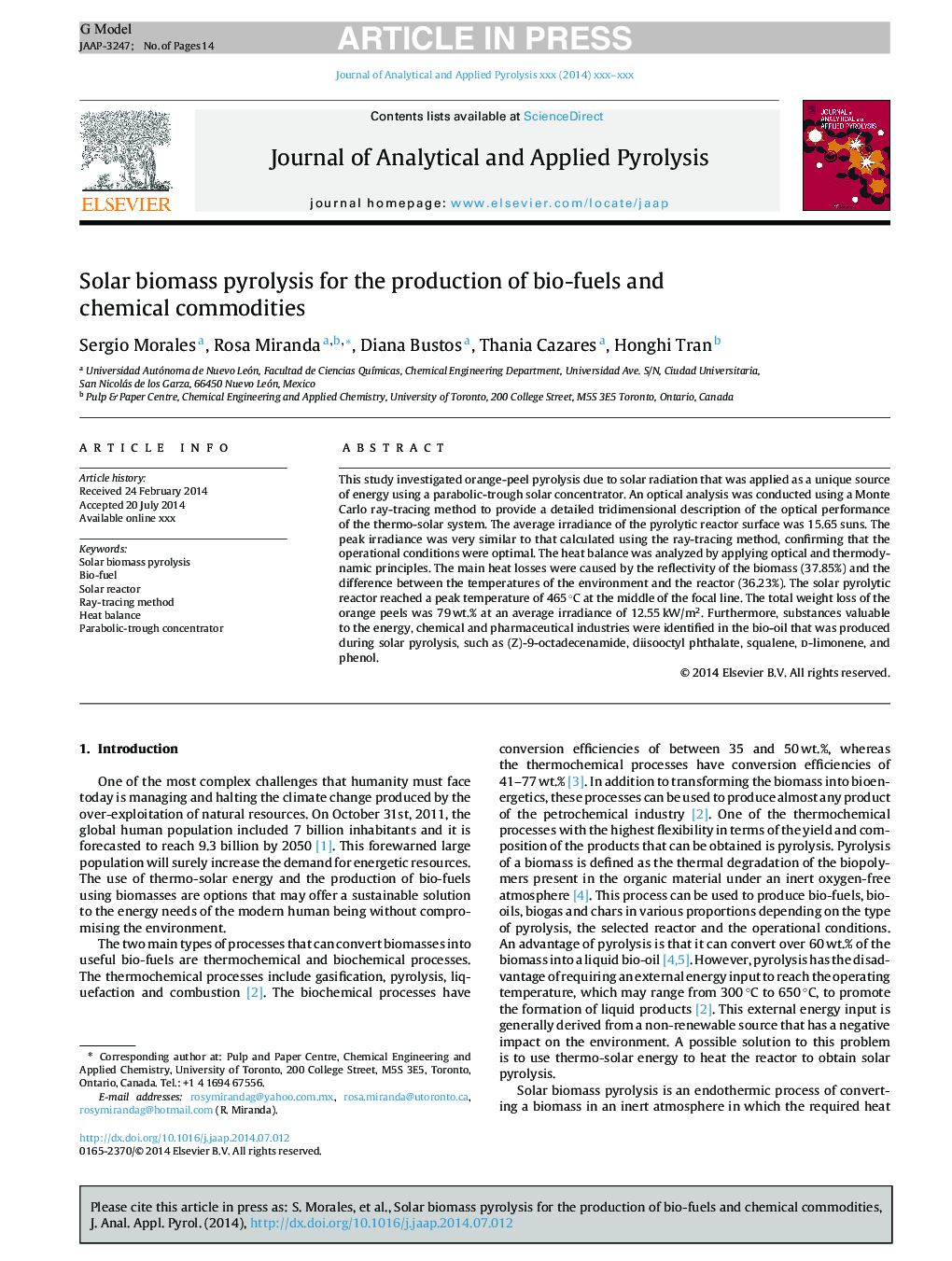| Article ID | Journal | Published Year | Pages | File Type |
|---|---|---|---|---|
| 7606878 | Journal of Analytical and Applied Pyrolysis | 2014 | 14 Pages |
Abstract
This study investigated orange-peel pyrolysis due to solar radiation that was applied as a unique source of energy using a parabolic-trough solar concentrator. An optical analysis was conducted using a Monte Carlo ray-tracing method to provide a detailed tridimensional description of the optical performance of the thermo-solar system. The average irradiance of the pyrolytic reactor surface was 15.65 suns. The peak irradiance was very similar to that calculated using the ray-tracing method, confirming that the operational conditions were optimal. The heat balance was analyzed by applying optical and thermodynamic principles. The main heat losses were caused by the reflectivity of the biomass (37.85%) and the difference between the temperatures of the environment and the reactor (36.23%). The solar pyrolytic reactor reached a peak temperature of 465 °C at the middle of the focal line. The total weight loss of the orange peels was 79 wt.% at an average irradiance of 12.55 kW/m2. Furthermore, substances valuable to the energy, chemical and pharmaceutical industries were identified in the bio-oil that was produced during solar pyrolysis, such as (Z)-9-octadecenamide, diisooctyl phthalate, squalene, d-limonene, and phenol.
Related Topics
Physical Sciences and Engineering
Chemistry
Analytical Chemistry
Authors
Sergio Morales, Rosa Miranda, Diana Bustos, Thania Cazares, Honghi Tran,
